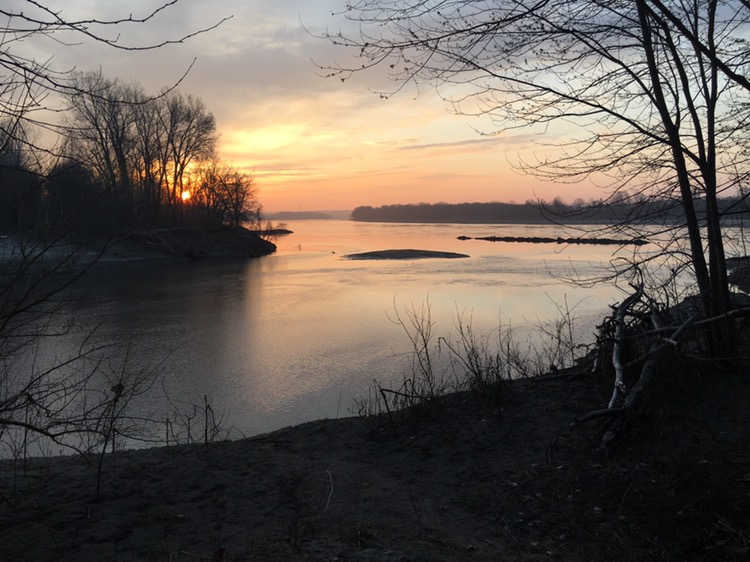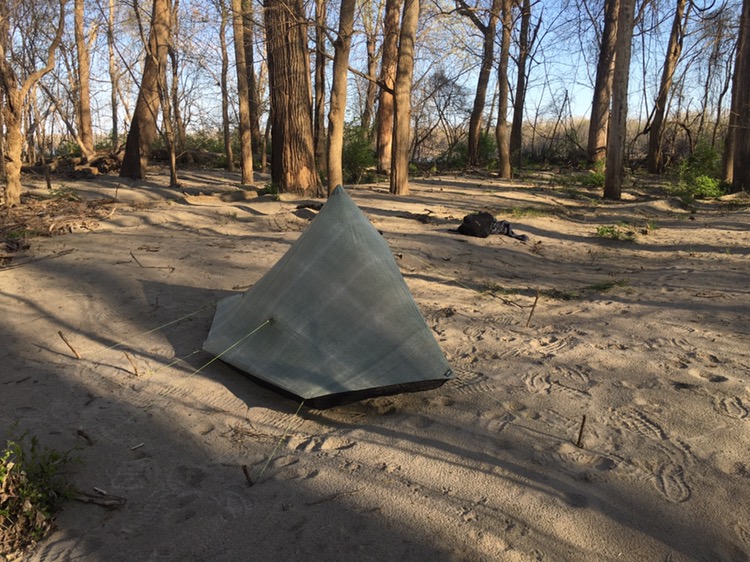I had the trail to myself when I started walking. People in nearby farmhouses were still sleeping. Birds flitted and sang, squirrels scampered.
I saw a place where beavers had been cutting trees during the spring floods. That’s assuming there aren’t 10 foot tall beavers around.
St Charles was a beautiful town. The trail ran near the river past brick homes built in the 1800s. I began to see bicyclists enjoying the trail.
I saw a number of red birds, some cardinals, and what looked to be, perhaps, scarlett tanagers. Binos would have helped.
In places the trail ran next to the river where big cottonwoods grow and where annual spring floodwaters have only recently receded. In others it crossed fields, a pleasant variety in scenery. This has been one of the flattest sections of trail I’ve hiked.
My feet were aching by the end of the day, which is to be expected this early in the hike. I did about twenty miles. My pack is so light, maybe 15 pounds with food and water, that my shoulders barely notice it.
I found a nice spot for camping, near the river on dry sand dotted with fox and deer tracks, with many cottonwoods ringed by beaver. I made sure to pick a spot where a dead trees or branches wouldn’t hit me. It was a warm, dry, comfortable camp.
Lewis May 20, 1804 …we set forward to that village [St Charles] in order to join my friend companion and fellow labourer Capt. William Clark who had previously arrived at that place with the party destined for the discovery of the interior of the continent of North America…[young men of St Charles] are frequently absent from their families or homes the term of six twelve or eighteen months and alwas subjected to severe and incessant labour, exposed to the ferosity of the lawless savages, the vicissitudes of weather and climate, and dependant on chance or accident alone for food, raiment or relief in the event of malady.



My videos, Facebook, email and more!